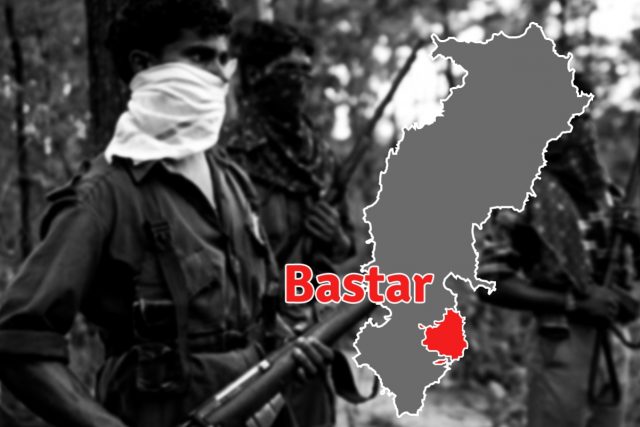
-Anand Trivedi
It was that moment in my two-and-a-half-year tenure at NITI Aayog which I had once thought I would get an opportunity to experience. The visit to the district of Bastar a few months back was something I had been looking forward to quite positively.
Bastar had intrigued me, not just given the development journey it had carved out on itself or its performance as an aspirational district, but also because I share a personal connect with the place due to a close friend who has worked very closely with the administrations in the region to promote tourism, create livelihoods and drive skill development while changing the narrative around the security situation in the state through his initiatives like ‘Unexplored Bastar’ and ‘Amcho Bastar Bazaar’.
The developmental journey of Bastar, so deeply affected by the history of left-wing terrorism over the last decade, has been unique in many ways.
And, while a lot has been written about the district from that perspective, this piece is primarily focussed on the way the district has positively responded to the opportunities and challenges thrown at it by the aspirational districts programme in the last year-and-a-half.
While a few new initiatives have been launched, the broader takeaway for the district administration through the aspirational districts programme has been the increased focus on existing initiatives to deliver quick results.
This is partly driven due to the system of monthly delta ranking among districts institutionalised by the aspirational districts programme.
To exemplify the above, consider that in a state which had 37.7 per cent of its children under the age of five which are underweight, 37.6 per cent are stunted (height-for-age) and 23.1 per sent are wasted (weight-for-height) with 8.4 per cent of them being severely wasted, the district of Bastar had reported 50.6 per cent of its children under five to be underweight, 41.6 per cent to be stunted and 33.9 per cent to be wasted with almost double the state percentage number of them being severely wasted i.e. 15.4 per cent.
The story of Bastar since then and especially recently through the launch of its unique initiative called ‘Harik Nanibera’ (translated in English as ‘happy childhood’) has been that of phenomenal transformation with micro-targeting of initiatives driven by the district administration.
By classifying 1946 anganwadi centres spread across nine blocks of the districts and covering 70,369 children into three groups i.e. group A with more than 45 per cent of their children being malnourished, group B with 25-45 per cent of children being malnourished and group C which had less than 25 per cent children being malnourished, the district designed a well-prioritised intervention to quickly start impacting its nutrition status.
About 316 anganwadi centres with 9,662 children under group A were treated with a high-intensity multi-pronged intervention which included supplementary nutrition having three eggs and three groundnut jaggery laddus in a week, usage of fortified iodized salt, promoting households to give the first meal at home before sending children down to anganwadis, monthly ‘vajan tyohar’ (monthly child weight weighing festivals), cleaning of water logging and driving 100 per cent toilet usage, ‘saas bahu sammelan’ (joint mother-in-law and daughter-in-law meetings promoting behavioural change to primary care), encouraging kitchen gardens, complete vaccination and albendazole, among others as its elements.
Such high-focussed programmes combined with other efforts at the district administration have led to the percentage of underweight children coming down to 33.9 per cent as reported in October 2019.

In a separate initiative, the district administration, in the absence of more granular and frequent dataset on learning outcomes among the students of classes III and V in the government schools, recently got the complete baseline assessment conducted through a third party (but internal district resources from unrelated divisions and departments at district level) for English, Math and Hindi.
This was aimed at developing an internal mechanism for measuring outcomes of planned interventions wherein about 2,138 of the 2,552 students were assessed.

In an effort to increase farmers’ incomes and improving their resilience to external shocks, the district has also initiated focussed implementation of the state government programme called ‘NGGB — Narwa (Rivulet), Garuwa (Livestock), Ghurwa (domestic dump) Badi (Backyard farming)’ which adopt a multipronged approach by simultaneously targeting irrigation facility development/renovation, facilitating protection to potential second crop by farmers due to stray cattle being provided dedicated grazing grounds on the village panchayat boundaries and developing kitchen gardens in the backyards of farmers helping them have nutritious food.
It will also provide space for grazing, vaccination, breed improvement while converting their waste as fertilizer in farm soil.
Just as these long-drawn efforts take shape, the district administration is also involved in interventions like leveraging availability of Science, English and Math teachers by forming district-level teams to train other teachers for delivering last-mile instructions to students, strengthening of its 21 primary health centres or reorienting traditional medical practitioners about the diseases (Diarrhoea, Malaria, malnutrition, snake bite) and institutional deliveries, which are aimed at leveraging existing resources to deliver immediate, yet sustainable results.
These efforts are further complemented by active engagement with the security forces, who often end up as primary service providers in health, education and nutrition areas in areas difficult to access as yet, and wider community of civil society organisations, social start-ups and larger citizen-led movements to change the narrative around Bastar by delivering developmental outcomes.
And I found these stories galore across districts in this part of Chhattisgarh. It is truly inspiring to see how a positive mindset combined with the will of a critical mass of decision makers and communities can completely galvanise the ecosystem to leverage existing resources despite various constraints on the ground.
So, while the aspirational districts programme is playing a very important role in structuring and scaling up this change, it is the champions of change in the districts as we at NITI call them, who have truly embraced this challenge thrown at them with grit and determination.
Source: swarajya














